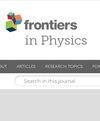A survey on deep learning in medical ultrasound imaging
IF 1.9
3区 物理与天体物理
Q2 PHYSICS, MULTIDISCIPLINARY
引用次数: 0
Abstract
Ultrasound imaging has a history of several decades. With its non-invasive, low-cost advantages, this technology has been widely used in medicine and there have been many significant breakthroughs in ultrasound imaging. Even so, there are still some drawbacks. Therefore, some novel image reconstruction and image analysis algorithms have been proposed to solve these problems. Although these new solutions have some effects, many of them introduce some other side effects, such as high computational complexity in beamforming. At the same time, the usage requirements of medical ultrasound equipment are relatively high, and it is not very user-friendly for inexperienced beginners. As artificial intelligence technology advances, some researchers have initiated efforts to deploy deep learning to address challenges in ultrasound imaging, such as reducing computational complexity in adaptive beamforming and aiding novices in image acquisition. In this survey, we are about to explore the application of deep learning in medical ultrasound imaging, spanning from image reconstruction to clinical diagnosis.医学超声成像中的深度学习调查
超声波成像已有几十年的历史。由于具有无创、低成本的优势,这项技术已被广泛应用于医学领域,并在超声成像方面取得了许多重大突破。尽管如此,该技术仍存在一些缺陷。因此,人们提出了一些新的图像重建和图像分析算法来解决这些问题。虽然这些新的解决方案有一定的效果,但其中很多都会带来一些其他副作用,如波束成形的计算复杂度较高。同时,医用超声设备的使用要求相对较高,对于没有经验的初学者来说不是很方便。随着人工智能技术的发展,一些研究人员已经开始努力部署深度学习来应对超声成像中的挑战,例如降低自适应波束成形的计算复杂度和帮助新手获取图像。在本研究中,我们将探讨深度学习在医学超声成像中的应用,从图像重建到临床诊断。
本文章由计算机程序翻译,如有差异,请以英文原文为准。
求助全文
约1分钟内获得全文
求助全文
来源期刊

Frontiers in Physics
Mathematics-Mathematical Physics
CiteScore
4.50
自引率
6.50%
发文量
1215
审稿时长
12 weeks
期刊介绍:
Frontiers in Physics publishes rigorously peer-reviewed research across the entire field, from experimental, to computational and theoretical physics. This multidisciplinary open-access journal is at the forefront of disseminating and communicating scientific knowledge and impactful discoveries to researchers, academics, engineers and the public worldwide.
 求助内容:
求助内容: 应助结果提醒方式:
应助结果提醒方式:


